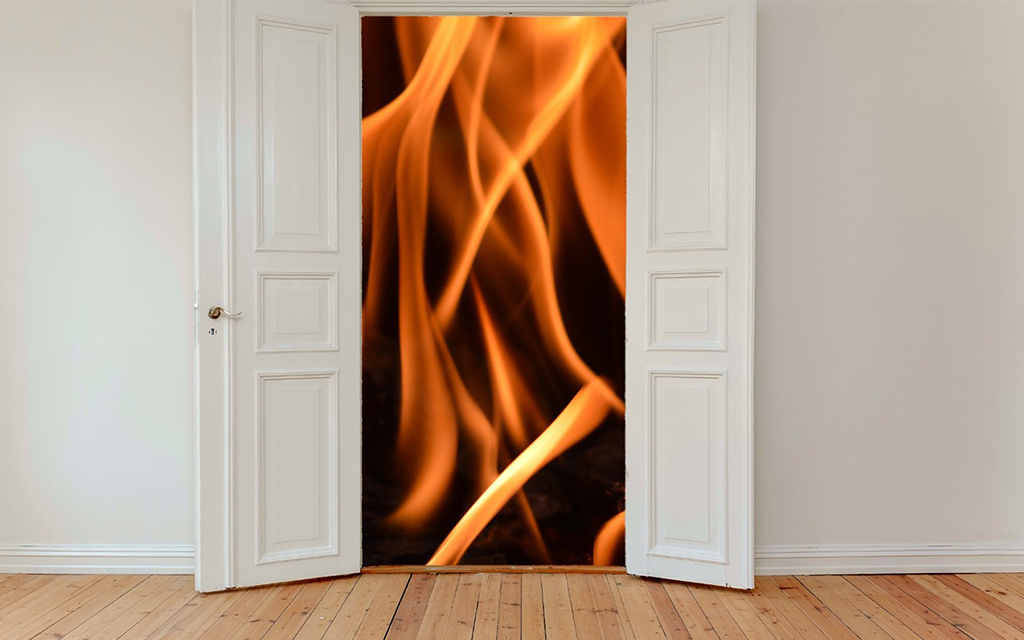Doors are an essential component in any building, serving both functional and aesthetic purposes. The type of door chosen can significantly impact the flow, security, and acoustic properties of a space. Here, we delve into various types of doors, each with unique features and benefits: Swing, Sliding, Pivot, Bi-Fold, Fire Rated, and Acoustic.
Swing doors are the most common type of door found in residential and commercial buildings. They are hinged on one side, allowing them to open either inward or outward. Swing doors are simple to operate with a push or pull mechanism, and they come in a variety of styles, including single or double door formats. Their versatility makes them suitable for both interior and exterior use, making them ideal for bedrooms, bathrooms, entryways, and offices.

Sliding doors operate on a track system, allowing the door to glide horizontally along the wall. They are perfect for areas with limited space since they do not swing open, conserving valuable floor space. Sliding doors also provide a sleek and contemporary look, often enhancing modern interior designs. They are particularly suitable for wide openings, frequently used to merge indoor and outdoor spaces seamlessly. Common applications include patios, balconies, closets, and room dividers.

Pivot doors rotate on a pivot box rather than traditional side hinges, allowing them to open both inward and outward. This unique operation provides a modern and stylish appearance, and the pivot point can be centrally located or offset, offering a distinctive entry experience. Pivot doors can support larger and heavier doors than traditional hinges, making them a popular choice for high-end residential properties, galleries, and commercial buildings where a grand entrance is desired.

Bi-fold doors consist of multiple panels that fold back against each other when opened, allowing for a large opening when fully retracted. This design maximizes space and offers flexible configurations with varying numbers of panels. Bi-fold doors are ideal for creating a seamless transition between indoor and outdoor spaces, making them excellent for patios, sunrooms, and areas where an unobstructed view and easy access are desired.

Fire rated doors are specially designed to withstand fire and prevent its spread for a specified period. They meet stringent fire safety standards and building codes, making them essential for commercial buildings, hospitals, schools, and residential properties. Fire rated doors are constructed from materials like steel, gypsum, and fire-resistant glass, providing thermal insulation and slowing the spread of fire and smoke. They are typically installed in stairwells, corridors, and between different fire zones to enhance safety

Acoustic doors are engineered to reduce the transmission of sound from one room to another. They are constructed with materials that absorb and block sound, and often feature seals around the edges to prevent sound leakage. Available in different sound transmission class (STC) ratings, acoustic doors are ideal for recording studios, conference rooms, theaters, and any space where sound control is critical. These doors help maintain privacy and reduce noise pollution, ensuring a quiet and comfortable environment.
Choosing the right type of door depends on the specific needs of the space and its intended use. Swing doors offer simplicity and versatility, while sliding and bi-fold doors are excellent for saving space and creating large openings. Pivot doors provide a modern aesthetic, fire rated doors ensure safety, and acoustic doors control sound. Understanding the unique features and applications of each door type will help in making an informed decision that enhances both the functionality and aesthetics of any building. STI, as a leading door manufacturer, can create all these types of doors to meet your specific requirements and preferences, ensuring that you get the perfect door for your needs.
[Image Source : Air-lux.com, iStock, Pixabay, Pexels, Cinema21]





































